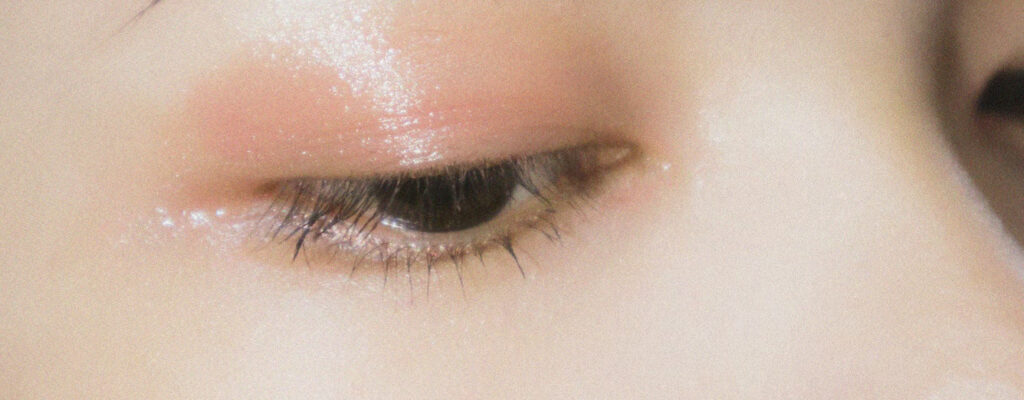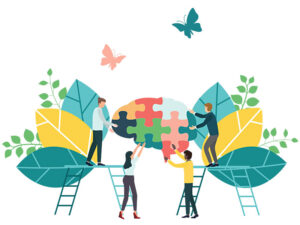Blush. Mascara. Highlight. Lipstick. These are terms that many could recognize instantaneously. Today, makeup seems to be an intrinsic aspect of our everyday lives, from a sacred step in a morning routine to a touch-up before a fun night out. It has played a significant role in our society for several years. Makeup can influence our self-image and can serve as a symbol of wealth and class status. Ranging from a lighthearted application in costume to a life-altering component of gender expression, makeup may also aid us in shaping our identities. Though gender discourse is becoming prevalent in the cosmetic industry, the relationship between makeup and gender has been nonlinear throughout the history of the Western World. In order to truly understand makeup’s influence within our society today, we must start at the beginning.
The first use of cosmetics traces back 6,000 years ago to ancient Egypt, where it “served as a marker of wealth believed to appeal to the gods” according to Meg Matthias’ article “Why Did We Start Wearing Makeup?”. Both Egyptian men and women would wear kohl around their eyes, paint their lips with stains from beetles or red ochre, and powder their faces white to lighten their skin. At the time, makeup was used by Egyptian men to showcase their masculinity.
The ancient Greeks and Romans utilized similar techniques. Rogue was used to add color to cheeks, and they painted their faces with powders made from ground-up minerals. However, it was during these eras where a distaste for makeup began to arise. Some Greek and Roman thinkers associated cosmetics with sex workers and single women, although it seems their mindsets were in the minority as women from all ages and statuses carried on wearing makeup. During the Roman era, it was widely agreed that cosmetics were for women only. If a man spent too much time on his appearance, he was often ridiculed.
These patterns in society of embracing versus rejecting makeup and of approving versus disapproving makeup for men continued as time went on. Some notable shifts in history include: the popularity of cosmetics during the Byzantine era or the rejection of makeup (especially on men) during the mid-19th century after it was declared “vulgar” by Britain’s Queen Victoria. Before the Enlightenment period, men spent more time and energy towards their appearances. However, the time following the Enlightenment period and the French Revolution was characterized by a public disapproval of the male extravagance that was formerly associated with higher classes. Instead, society began assigning the gender roles we are familiar with today: men as hardworking breadwinners and women as objects. Although makeup did not completely disappear in the 1800’s, there wasn’t a strong resurgence of highly visible cosmetics in the Anglo-American world until the 1920’s. Once again, cosmetics became a symbol of status and wealth as opposed to something wicked that was looked down upon in society.
It was during this time that the beauty industry began to establish itself as a major player in the economy. In fact, part of the reason that makeup made such a big comeback among women was due to gendered marketing. Unfortunately, despite the fact that we have made massive progress in dismantling societal stigmas surrounding cosmetics, there is still an obvious gender binary in advertising for beauty and grooming. For example, products targeting women are often light colors with floral scents while the advertisements garnered towards men feature products in dark, bland colors with hypermasculine scents such as “GLACIER PUNCH.”
After years and years of witnessing cosmetic marketing with such a distinct barrier between men and women, it is refreshing to come across brands that market themselves as gender inclusive. Gender-inclusive marking is advertising “in a way that does not discriminate against a particular sex, social gender or gender identity, and does not perpetuate gender stereotypes.” It is important because it normalizes the gender spectrum, helping the world feel more open and safe. In an article for Refinery29, Rachel Lubitz writes “in a world where transgender, non-binary, and gender non-conforming people can feel understandably uneasy going up to something as public as a department store counter for makeup advice, this new corner of the industry matters.” Despite the amazing progress with gender inclusivity in makeup brands, there is still more work to be done in the beauty industry. For example, there are companies that use “representation” solely as a crooked sales tactic (since statistically gender-inclusivity is becoming increasingly profitable) as opposed to actually caring about bringing joy and comfort to their consumers.
All in all, the steps we have taken as a society in the past 20 or so years towards lifting up the LGBTQ+ communities in the beauty and grooming industry are no small feat. Nonetheless, there are always improvements that can be made. As cosmetics brands begin to build upon the success of representation politics, we, as consumers, should challenge them to take it up to the next level. Is their representation reflected internally? How diverse is their brand’s team? Questions like these are essential to the expansion of inclusivity not just within the beauty sector but throughout all industries.
Photo by Linh Ha on Unsplash








